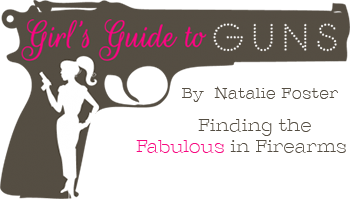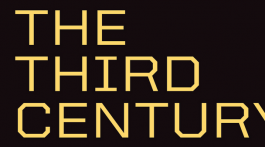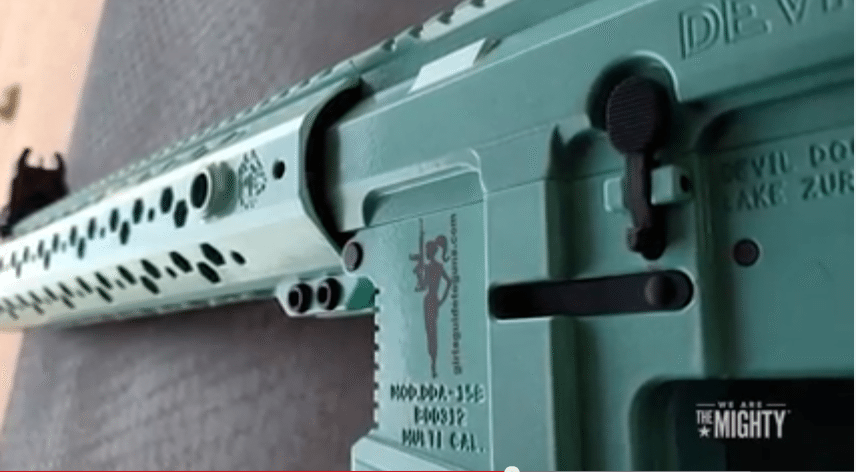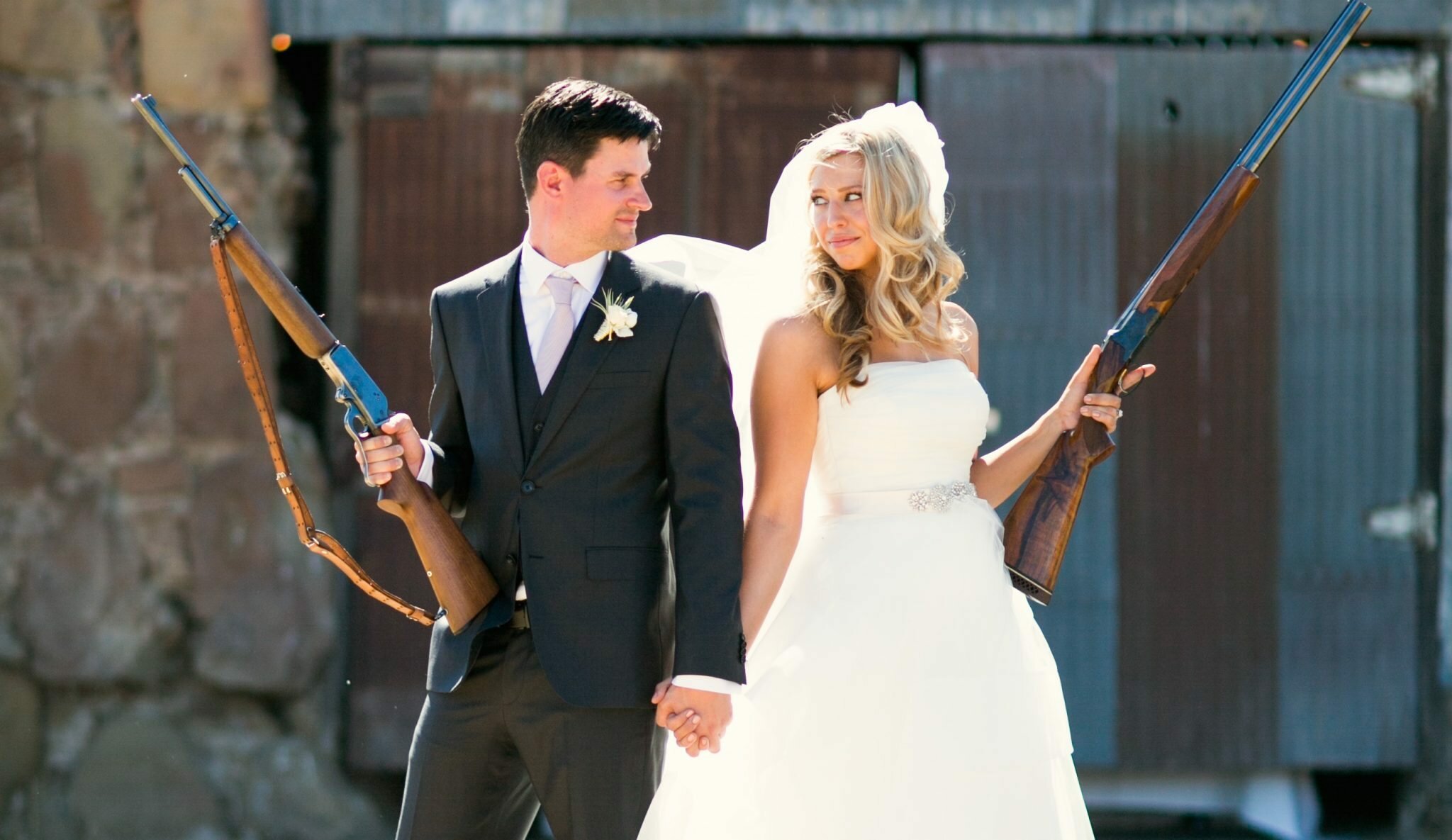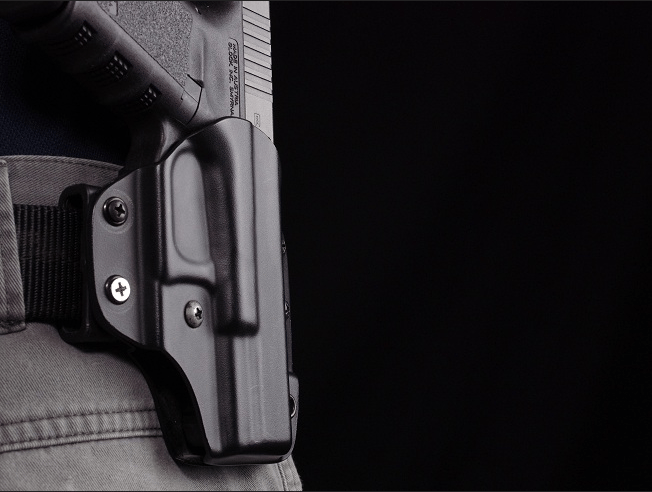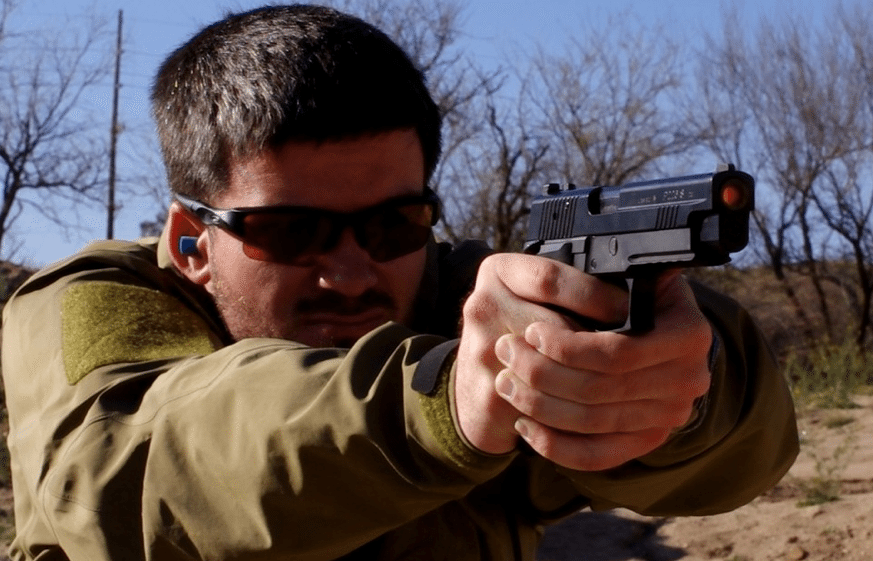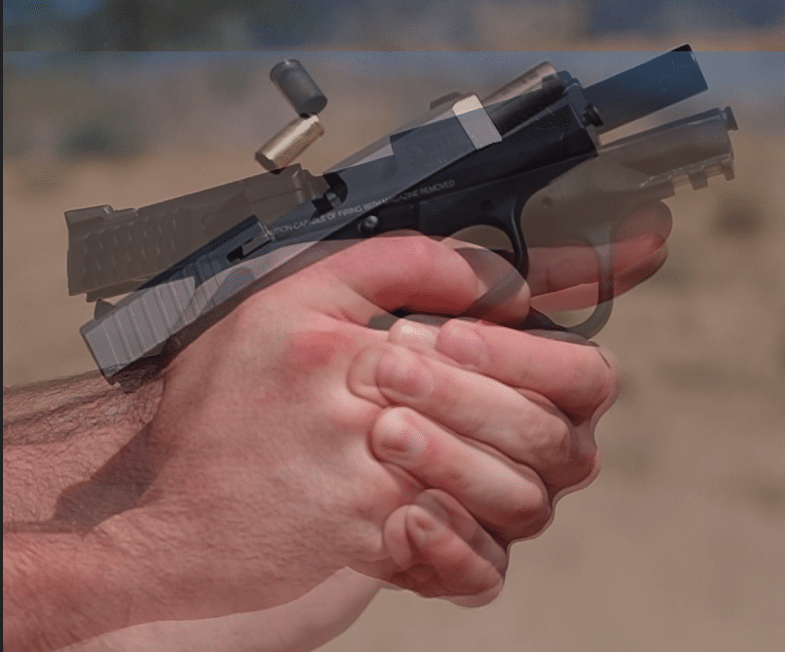My friend Andrew Tuohy over at Vuurwapen Blog (Translated: Gun Blog) never ceases to astound me with his encyclopedic knowledge of firearms. He was kind enough to lend us some of his wisdom with this piece about how to choose your concealed carry firearm.
If you’ve been looking to purchase a firearm for concealed carry, as many Americans are doing, you might have already noticed that there are a lot of different firearms on the market which are supposedly idea for the purpose. While it’s true that many people carry many different handguns and the vast majority of them do so successfully, some handguns offer certain advantages over others.
Especially if you’re new to firearms and don’t currently own one which might be suitable for home defense, you’re probably already considering the possibility that your new concealed carry handgun could also serve as a home defense weapon. Alternately, you might be looking for a home defense firearm first – keep in mind that even if you’re not completely sure that you want to carry a handgun outside your home, it might be a good idea to keep that possibility open.
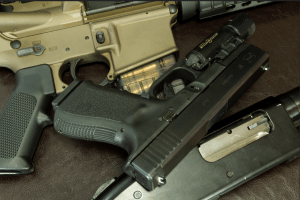
Pistols, rifles, and shotguns are all viable choices for home defense - but only pistols may also be used for concealed carry.
Pistols, rifles, and shotguns are all viable choices for home defense – but only pistols may also be used for concealed carry.
Many people buy different firearms for these purposes, and they aren’t wrong to do so. In fact, handguns are inferior to shotguns and rifles from a technical standpoint. But with the purchase of additional firearms comes additional costs – not only the cost of the weapon, but also the cost of the different types of ammunition used for handguns, shotguns and rifles.
In addition, more time must be spent maintaining proficiency with different types of firearms. Most people enjoy shooting if they’re introduced to it responsibly, but not everyone can take the time to shoot a number of different firearms on a regular basis.
Using one firearm for both carry and home defense, then, is not an unreasonable course of action. But which handguns fit the bill?
Firearm Size and Caliber
Buying a handgun for concealed carry only works if you actually carry it. Primarily, there are two factors which could negatively affect your desire to continue – or start – carrying a handgun. These are the physical characteristics of the handgun and how much recoil it has.
For the first period of time after you start carrying a handgun, you’re probably going to be uncomfortable simply because of the presence of a handgun on or near your body. It takes a little time to get used to the idea.
However, if the handgun is too big or heavy, it will cause unnecessary physical discomfort. It might also be a little too obvious, or cause “printing” – the outline of the handgun might be visible through your clothes. Therefore, it’s best to avoid unnecessarily large or heavy firearms for concealed carry purposes.
That said, you don’t really need to go to the other end of the scale – tiny and extremely light firearms.
Small firearms in major calibers – or even small firearms in general – can be difficult to control. Most people won’t be able to get a good, positive grip on the weapon, and reduced firearm weight combined with a relatively large, fast projectile will always result in stout recoil. These factors combine for an unpleasant and sometimes unproductive shooting experience. Avoiding the use of the firearm because it’s not fun to shoot won’t do you any favors if you have to use it to defend yourself, and you might end up disliking it so much that you don’t carry it at all.
So a sensible course of action for concealed carry is something that’s not too large and heavy, but also not too small and light. Something you can get your hand – or hands – on, and something that you’ll actually want to shoot.
Specific Firearm Models
Perhaps the most obvious example of the type of firearm which fits this bill are the compact and subcompact offerings from Glock and Smith & Wesson – specifically, the Glock 19 Gen 3 and Glock 26, and the Smith & Wesson M&P and M&P Compact. The largest of these is the standard M&P, which is similar to the Glock 19 in length but has a longer grip; the smallest is the Glock 26, although the M&P Compact is very similar in size.
Those who are familiar with Glock model numbers will note that I did not mention the .40 S&W versions of the compact and subcompact Glock. The G19 and G26 are both chambered in 9x19mm, which is an excellent all-around defensive cartridge. It is easier to control than its slightly larger competition, offers a higher magazine capacity, and is also cheaper to buy.
The M&P models are, of course, available in 9mm as well. Compared to the Glocks, they offer the advantage of being more adaptable to right- or left-handed use, as well as an interchangeable backstrap system which allows the user to better fit the pistol to the size of their hands. In addition, the M&P may be disassembled without pulling the trigger, which may be an important feature to some.
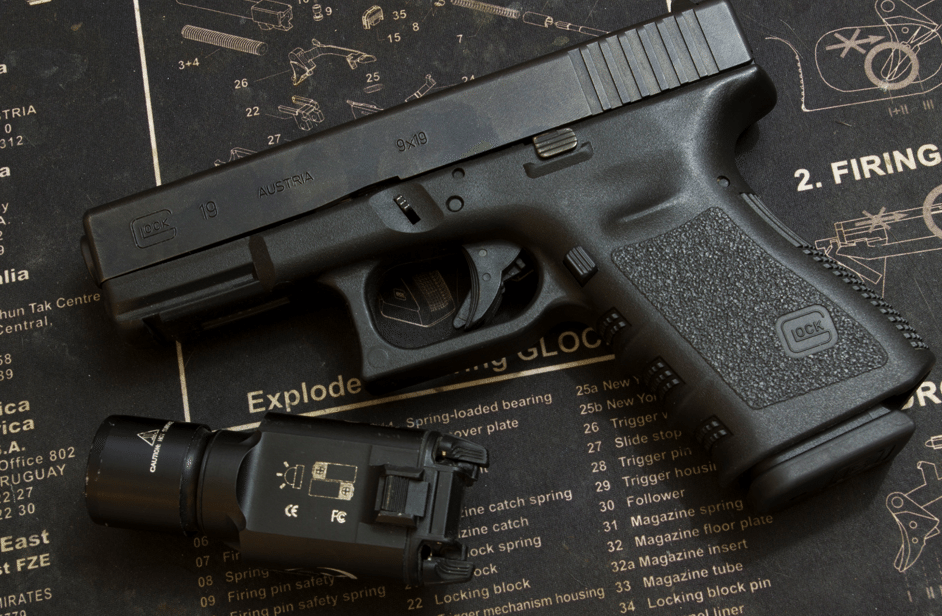
A midsize handgun such as a Glock 19, along with a flashlight, is a good choice for self defense, both inside and outside the home.
Glocks offer the advantage of being on the market longer. They have a larger and more robust aftermarket support base, as well as the availability of all manufacturer spare parts. Also, the Glock trigger is regarded as being superior to that of the M&P, although neither comes with what could be considered an excellent match or target trigger. Finally, with stock barrels, Glocks in 9mm are often found to be more accurate than the M&Ps in that caliber, although the differences are likely to be minor and both pistols are liable to be more accurate than most shooters.
Depending on the size and shape of your hands and body, one of these pistols might be a better choice for you than the other. The Glock 26 and M&P Compact are definitely a little easier to conceal, but the Glock 19 and M&P are a little easier to shoot. I highly recommend going to a firearm range that rents handguns out for a nominal fee and shooting each of these pistols – as well as any others you might be interested in – in order to determine which one is the right choice for you.
Each of these firearms would also serve well in a nightstand or small bedside gun safe in addition to being useful for concealed carry. The Glock 26 is the only outlier in that it does not have an accessory rail for the attachment of a weapon-mounted flashlight, but the others do allow lights of various sizes to be attached.
Other Important Factors
Whether you choose to buy a weapon-mounted light or a handheld light, it’s critical that you identify your target before you shoot. The lights in your house might be out or the switch too far away, so take the extra step of buying a good flashlight and keeping it near your firearm. Additionally, night sights are a good option for a home defense or concealed carry firearm.
Regardless of the firearm you end up buying, be sure to practice regularly with it, and educate yourself on the laws regarding self defense in your area. Don’t fret too much about the model or caliber of the handgun you buy. It’s far more important that you know how and when to use it.
